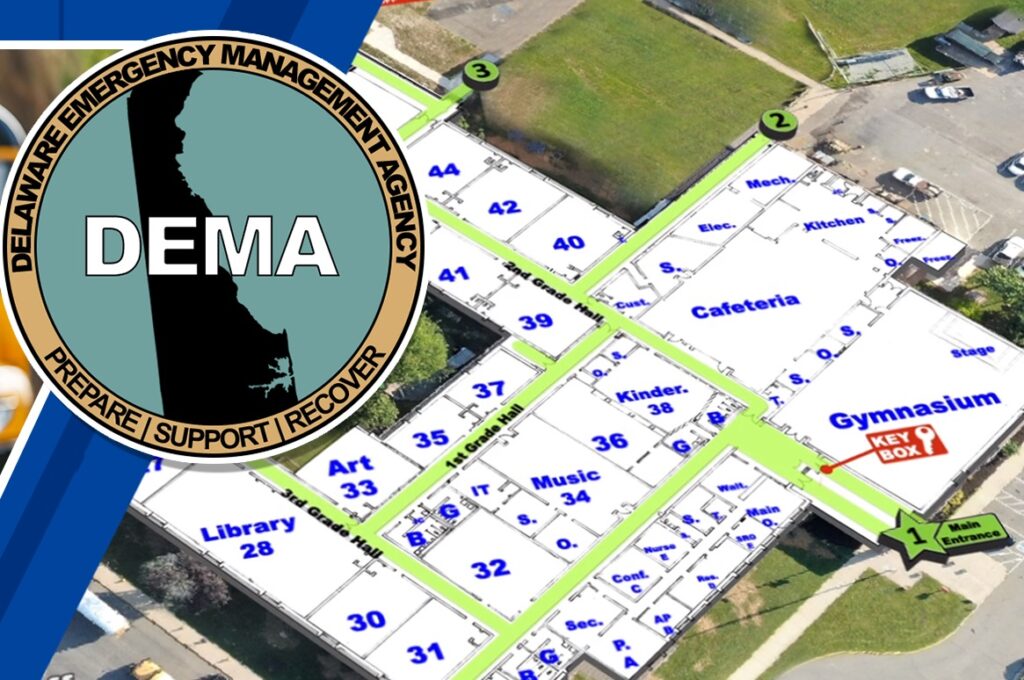State officials recently marked completion of several major safety initiatives under the Delaware Emergency Management Agency’s Comprehensive School Safety Program (CSSP).
Delaware is now among the first states to create high-resolution digital blueprints of all school buildings and grounds for every public and charter school. The new maps will enable law enforcement and first responders to react swiftly in the event of an emergency at any of the state’s 231 schools.

With almost $1 million from Delaware’s School Safety and Security Fund, the CSSP partnered with New Jersey-based Critical Response Group last fall to create easy-to-understand composite maps of school campuses using gridded overlays that incorporate the same tactical and operational framework of specialized military units. The maps will be continuously updated and shared with state and county emergency officials, local law enforcement, and school staff.
Delaware is also now among the first in the U.S. to complete statewide adoption of the “Standard Response Protocol” (Hold, Secure, Lockdown, Evacuate, and Shelter) and the “Standard Reunification Method” by the I Love U Guys Foundation. The organization’s programs are designed for crisis response and post-crisis student reunification with parents or guardians during any emergency, including fire, flood, tornado, power outage, bomb threat, accident, or act of violence.
All state schools have completed training and are forming reunification teams. A total of 221 instructors have finished their training, and another 145 are scheduled for a two-day workshop in the Lake Forest School District.
The CSSP also provided all schools with a new comprehensive safety plan, which is the first major safety update since the program was created in 2012. In addition, the CSSP is in the process of implementing a statewide Safety and Wellness Suite that includes anonymous reporting, basic needs resources, crisis texting, behavioral and suicide threat assessments, and a case management platform.
ALSO READ: What’s New in the PASS Guidelines for Securing K-12 Schools
